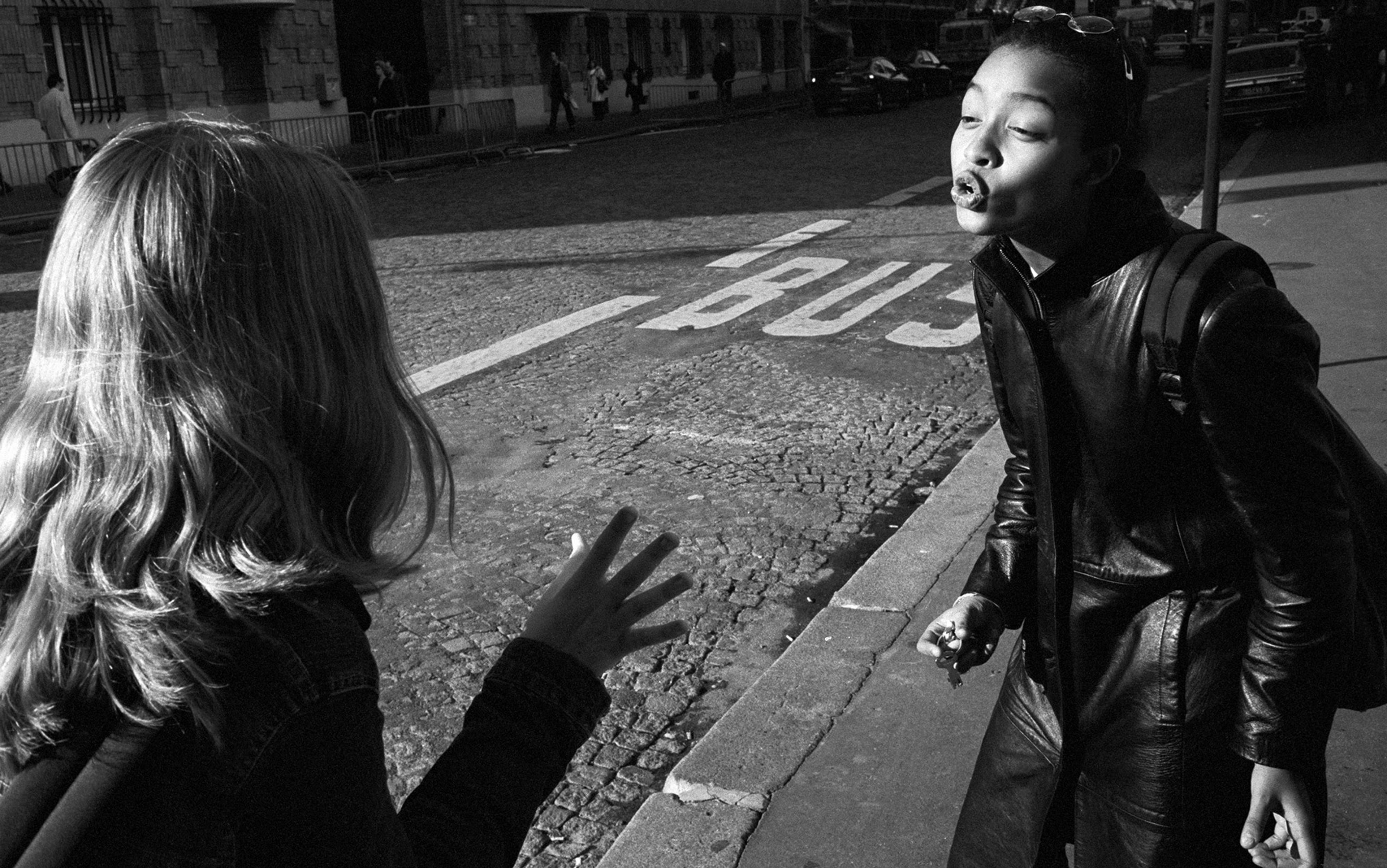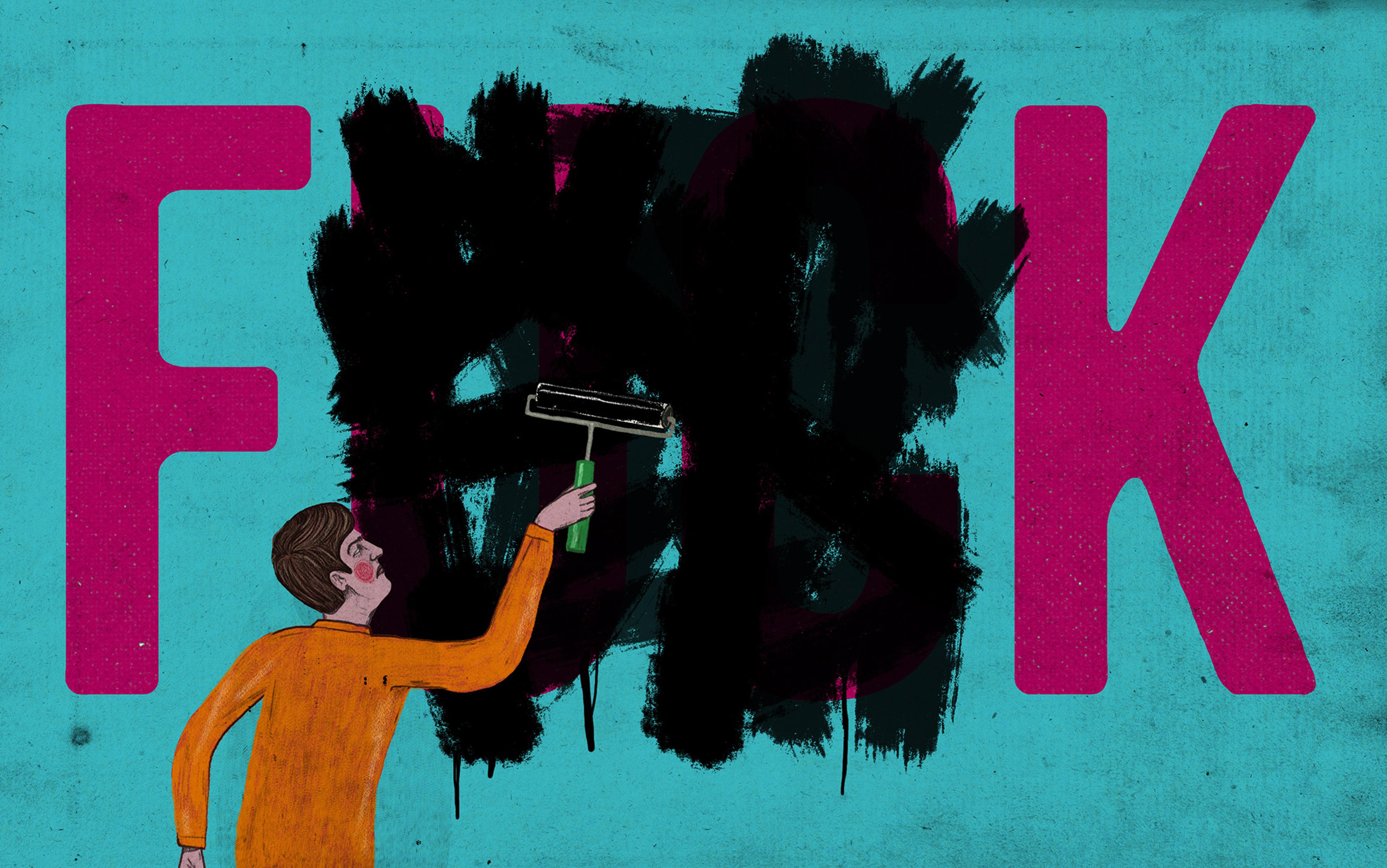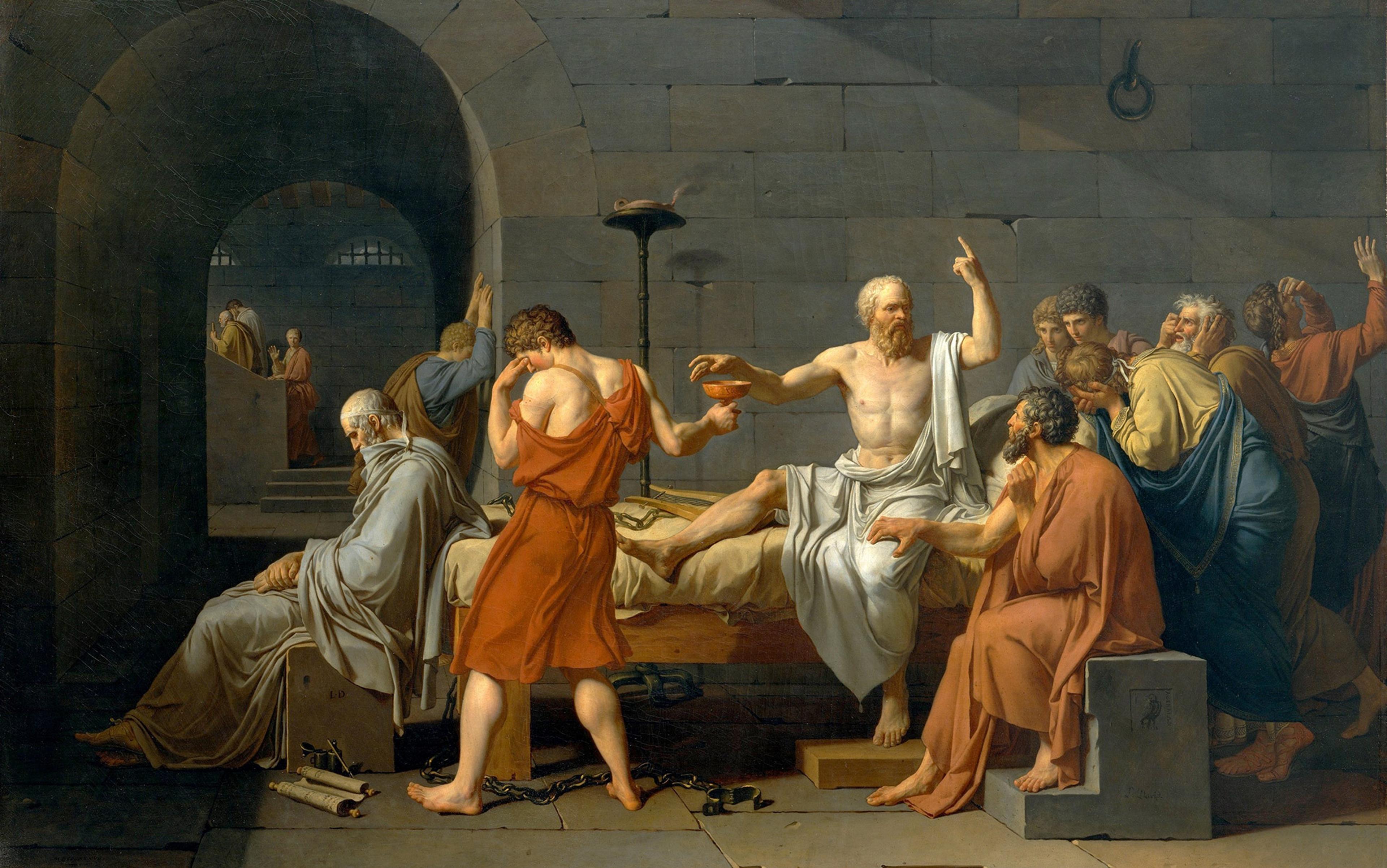In 1717, Voltaire was arrested, some might say, for giving offence. He had published a ‘satirical’ verse that opens by calling the Duc d’Orleans, the then Regent of France, ‘an inhuman tyrant, famous for poison, atheism, and incest’. This pungent personal attack became so popular it was sung on the streets of Paris. In response, the Duc had Voltaire arrested without accusation or trial. The author spent 11 months in the Bastille.
Such stories help to explain why Voltaire turns up so frequently in today’s debates over offensive speech, which are driven by the sense that members of historically marginalised groups have become increasingly willing to take offence to speech that they feel implies their exclusion or inferiority. Many believe that this trend has gone too far. In 2016, the Pew Research Centre in the US found that a majority of Americans believe that ‘too many people are easily offended these days over language’. Angus Reid, a Canadian polling company, found similar results – in their poll, 80 per cent of Canadians agreed with the statement: ‘These days, it seems like you can’t say anything without someone feeling offended.’ This sense is not without basis. Public discourse is filled with confrontations over offensive speech. Hardly a day goes by when some public figure is not called out for offensive behaviour, or when another argues that all this offence-taking is a threat to free speech.
Voltaire has become a kind of mascot for the free-speech side of this debate, and his encounter with the Duc fits the role perfectly. On this view, although Voltaire is outspoken and abrasive, he is ultimately on the side of reason and liberty. Those who take offence are like the Duc: they tyrannically silence others to protect their own sensitivities. The moral of the story is that we must not succumb to the temptation of censoring others, even if their speech is uncomfortable or painful to hear. After all, they are ‘mere words’.
This argument is premised on a particular conception of what offence is all about. What makes something offensive is that it presents an unwelcome viewpoint that creates discomfort, bruises egos, and hurts feelings. When people take offence, they are trying to silence those who offend them. Call this concept of offence offence-as-hurt.
The main theoretical counter to this view is to argue that offence is not about ‘hurt feelings’, but about real harm. A large body of cross-disciplinary research shows that pervasive messages of exclusion or inferiority directed at disadvantaged or vulnerable groups can cause emotional distress and psychological damage. Words wound, and the wounds are no less real for not being physical. This view has frequently been used to argue for legal prohibitions on hate speech. Call this view offence-as-harm.
There is a third possibility that is not often discussed but which, I will argue, does a better job of accounting for many contemporary conflicts over offence. Neither Voltaire nor the Duc would have seen their conflict as a matter of ‘offence’, properly speaking. In 18th-century France, ‘to take offence’ had a very specific meaning: to challenge another man to a duel. In duelling cultures, the challenge was nothing more than a gentlemanly convention for taking offence.To offend meant to insult or to disrespect, not to hurt one’s feelings. And to take offence was to reply to an insult by demanding a show of respect. I call this third alternative offence-as-insult.
The duel of honour was a violent practice deeply associated with elitism and is therefore repugnant to today’s moral sensibilities. That said, focusing too much on the differences between offence in the two historical contexts can blind us to important parallels. If the duel seems exotic, the underlying norm of equal respect that was at the heart of honour should be more familiar. The first part of this essay will explain how the duel was used to defend equal status for all gentlemen. The second will show how the same basic concept of offence-as-insult that underlies duelling can make more sense of today’s controversies over offensive speech than either offence-as-hurt or offence-as-harm.
Voltaire took insults seriously. We know this because, nine years after his run-in with the Duc, he challenged the Chevalier de Rohan to a duel. For this, he was again arrested, again sent to the Bastille. Voltaire’s quarrel with Rohan, a minor noble, began with an exchange of sharp words. According to record, Voltaire had the better of it, and Rohan left in a huff. Several days later, Rohan had Voltaire summoned from a dinner party and beaten with sticks by a gang of his servants while he mocked the writer from his carriage. Voltaire was outraged, and began training with a fencing master. When he thought he stood a chance of surviving an encounter, he publicly challenged Rohan to a duel. Rohan and his family found this impertinent, and so had the writer arrested. Rather than remain indefinitely in prison, Voltaire left for a three-year exile in England. In brief, this is how the events unfolded: jibes-thrashing-challenge-arrest.
The concept of honour is the key to understanding such quarrels. Honour was a kind of status, entitling those who possessed it to respectful treatment from others. It was a general social status that, unlike modern legal status, applied across contexts, extending into every aspect of social life. It entitled the gentleman to respectful treatment in the drawing room and on the street, as much as in the courts. As long as this idea of honour held sway, civility manuals explaining the proper behaviour, in any context, towards one’s inferiors and one’s equals were enormously popular.
Honour is often thought of in elitist terms. Indeed, in Voltaire’s time, only men at the upper level of the social pyramid were considered honourable, and they alone were entitled to duel. Honour separated gentlemen from commoners. However, within the elite group, honour implied equality. This is not to say that men of honour were equal in every dimension: massive disparities of wealth and power existed between them. But the whole point of personal honour was that it allowed all gentlemen, vastly unequal in many ways, to relate to one another as equals. The norm of equal mutual respect between men of honour governed every step of the quarrel.
The man who swallowed insults without retort was seen as a person who did not respect himself
Every quarrel began with an insult. Even insults that might seem trivial from the outside were taken seriously, because they spoke to a gentleman’s entire standing in society. A failure to show respect to a gentleman in any way implied that he deserved to be disrespected in every way. Calling a man a liar, a coward or a dog were classic verbal insults, but unspoken implications, contemptuous facial expressions and dismissive gestures could also provoke a challenge. Sometimes, men treated as insults things that might seem much more serious to our eyes. Being thrashed by a gang of lackeys, for instance. These apparently quite different forms of insult were treated in the same way because they carried an identical message of disrespect: they claimed superiority over the insulted party, implying that he belonged among the honourless masses, undeserving of respect.
According to the conventions of honour, to accept an insult was to confirm it. The man who swallowed insults without retort was seen as a person who did not respect himself, and was therefore undeserving of the respect of others. By contrast, to take offence denied the insult, and made a claim to the respect owed any gentleman. It was a way of saying: ‘You cannot treat me that way! Give an account of yourself.’ When a gentleman took offence in this way, his demand for a response was backed by social pressure from the wider community of honour. Challenges from equals were obligatory: a gentleman had to respond appropriately to a challenge or face dishonour.
This is not to say that every challenge led to combat. The key to ending the quarrel was for the insulter to reaffirm, in some way, the insulted party’s status as an honourable equal. Thus, most quarrels were settled either through an apology or some other explanation. Combat became necessary only when apologies were not offered or rejected. Since duelling could occur only between honourable equals – a gentleman would never duel a nongentleman – fighting a duel would ipso facto affirm the equal status of both combatants. To summarise: insults denied respect; challenges demanded it; duels delivered it.
The quarrel of honour, then, was a way of affirming or restoring equal status where it had been violated by disrespect. Of course, the entire process assumed that the disputants were equals in the first place. Between unequals, everything changed. Insults were not permitted to travel across class lines. According to the rules of honour, rudeness from below should be treated like misbehaviour from a child: one could indulge it, ignore it or punish it. One should never take offence to it. Similarly, a challenge from below should be ignored. It wasn’t a genuine challenge because a challenge assumed social equality. Inferiors did not have the standing to take offence at the behaviour of their superiors, so their offence didn’t matter in this scheme. It couldn’t harm the reputation of a gentleman. Where there was no equality of status, there was no norm of mutual respect, and no offence, properly speaking, was possible.
With this in mind, we can see how Voltaire tried and failed to put himself on equal footing with Rohan. Instead of responding to the writer’s initial mockery with an honourable challenge, Rohan punished him like an unruly child, highlighting his inferior status. He even had his minions apply the beating, not deigning to dirty his own hands. When Voltaire called out the noble, he was demanding that Rohan respond to him as a gentleman, implicitly claiming equal status with the noble. Rohan redoubled the insult by having Voltaire arrested rather than giving him satisfaction. At every turn, Rohan put Voltaire in his place, and there is no evidence that the noble’s reputation suffered in the least for doing so. Even Voltaire’s noble friends thought that he was acting above his station by attempting to quarrel with Rohan. Under the Old Regime status order, Voltaire was Rohan’s inferior. This is why duelling is so often seen as a medieval throwback, elitist to the core. On this view, held by many at the time, abolishing the duel would just be part and parcel of ending aristocratic class privilege.
The right to duel represented the right to be taken seriously when one took offence
History, however, took a different course. As the French aristocracy lost its prestige and the status order of French society became more equal, the duel spread and thrived. Bourgeois men began to occupy social contexts that were formerly exclusive to aristocrats, such as military officer corps, universities and literary salons. As they did so, they began defending their honour by blade and pistol. By the end of the 19th century, honour and the duel extended to men of all social classes. If Voltaire had challenged Rohan even 100 years later, the challenge would likely have succeeded: Rohan would have had to recognise him as his equal. This pattern is not exclusive to France. Across Europe, newly ‘equal’ men won a reputation for severe punctiliousness regarding the point of honour. And, as the American historian Robert Nye shows in Masculinity and Male Codes of Honour in Modern France (1998), those who kept duelling alive in France until the early 20th century were not reactionaries, nostalgic for the Old Regime. They included sworn enemies of class hierarchy: liberals, socialists, anarchists.
Why would bourgeois progressives adopt this violent aristocratic ritual? Social equalisation meant that commoners should no longer have to bear being treated as honourless inferiors by their erstwhile social betters. The right to duel represented the right to be taken seriously when one took offence. In their eyes, the duel was an essential bulwark of their newly won status. One apologist praised the duel because it ‘equalised ranks … without pity’. The French journalist Aurélien Scholl went so far as to declare that education in the art of fencing and the ethos of duelling ‘has done more than [The Declaration of Rights of Man and Citizen (1789)] to advance the cause of equality’. The right to take offence was the mark of full and equal status, as well as the means of enforcing it.
Can understanding how offence worked in duelling cultures shed any light on how offence works today? To be sure, there are some stark differences. The duel of honour was a violent, elitist practice that is now abhorred. No matter how offended people become today, they usually express their offence in other ways: personal confrontation (simply telling someone that what they’ve said is offensive); making a complaint to a human resources department; denouncing the offender in public, as when someone is pilloried on social media.
Triggers of offence are also different. Calling someone a liar or a coward is no longer a deadly serious insult. When people speak of offensive speech today, they usually mean things that are perceived to denigrate or exclude people based on identity characteristics such as race, gender and sexuality. This includes racial epithets and other explicitly demeaning forms of speech, as well as less direct expressions of exclusion. Off-colour jokes, song lyrics, memorial statues and university regulations on Halloween costumes have all been subjects of public controversies over offence. While sexism, racism and the like provoke offence more often than aspersions on personal honour, both contexts have this in common: that which offends can include anything that might be construed as imputing inferior status to its target.
There are very profound differences between offence in our times and offence in Voltaire’s. Nonetheless, the underlying view that offence is about insult and respect does a better job of explaining many conflicts over offence than do the main alternatives.
Today’s debates over offensive speech are waged between two main theoretical positions. The first, offence-as-hurt, holds that offence is simply a form of discomfort or pain that people experience when faced with speech they dislike or disagree with. Advocates of this view argue that mere psychic anguish – such as the public controversies over song lyrics, US campus politics or Hollywood casting decisions – are not enough to justify restricting anyone’s freedom of speech. Only real harm could do that.
The second position holds that denigrating speech causes real and serious harm to its targets, and therefore does justify restrictions on speech. It is perhaps unfair to call this position offence-as-harm because most of its proponents avoid the word ‘offence’, which smacks too much of subjective sensibility. In the classic text of critical race theory Words That Wound (1993) by Mari Matsuda et al, the introduction declares that the book is about ‘assaultive speech, about words that are used as weapons to ambush, terrorise, wound, humiliate, and degrade’. This model is most plausible in the context in which the argument was developed: justifying legislation against the most egregious forms of hate speech.
Before I take offence, the key question is not ‘How do I feel?’ but ‘Was the joke racist?’
Advocates of both concepts of offence can find examples that fit their argument. However, both leave out a wide range of cases in which insult, not hurt or harm, is the salient factor. These can be identified by simply reflecting on our everyday approach to evaluating confrontations over offensive speech. When someone takes offence to something, how do we decide if they are in the right?
Offence-as-hurt and offence-as-harm both focus on the effects on the target. To determine whether an instance of speech is offensive, we must find out how the audience feels about it. Offence-as-insult focuses instead on the content of the speech. To give a hypothetical example, when I am deciding whether to take offence to a colleague’s joke playing on my Chinese heritage, the key question is not ‘How do I feel?’ but ‘Was the joke racist?’ That this is the salient normative question indicates that offence is about the violation of norms of respect, not hurt feelings. In these cases, offended people do not need to demonstrate that they have suffered harm to justify taking offence. As in honour societies, offence is justified by whether or not an act treats its target as less than equal.
Offence-as-insult also makes more sense of our approach to apologies. No early modern gentleman ever avoided a duel by saying: ‘I’m sorry you feel that way.’ Nor is that a sufficient apology in most contemporary cases of offence. As in honour cultures, offence today demands an affirmation of respect for the offended person’s equal status, or evidence that the offending speech did not carry an insulting meaning. In the case above, if my colleague convinces me that the joke was not making fun of Chinese people, but rather of silly but commonly held stereotypes of Chinese people, then I might withdraw my offence.
In addition to making better sense of our everyday deliberations, offence-as-insult suggests a different overall picture of people who take offence, and how they fit into the current historical context. Most critics of offence-taking see those who take offence as the spoiled heirs of 1960s social movements. For them, the struggles of Civil Rights, second-wave feminism and the early gay-rights movement were justified struggles for equality. In these struggles, historically oppressed groups fought for and won recognition as full and equal members of society. Their status as full equals is embodied in equal rights, legal protections against discrimination and widespread norms against racism, sexism and other forms of hierarchy. On this view, once ‘official’ equality has been established, taking offence at merely expressive slights appears as an unjustified attempt to control the speech of others, a move beyond the justified aim of equality into identity-political special pleading and ‘victim politics’. Material and social inequalities might remain and ought to be fought, but the main battle for basic equality has been won.
Advocates of offence-as-hurt offer several explanations for why people today remain so easy to offend, even in the face of official equality. In their book The Rise of Victimhood Culture (2018), the sociologists Bradley Campbell and Jason Manning argue that social conditions, such as atomisation of individuals and diversity, foster an acute sensitivity to slight. In The Coddling of the American Mind (2018), the social psychologist Jonathan Haidt and the legal expert Greg Lukianoff argue that indulgent parenting practices and overprotective educational policy has produced pathologically fragile adults who are incapable of dealing with any expression that they do not agree with. For advocates of offence-as-harm, both cause and cure for conflicts over offence is in the fragile psyches of the offended: the best thing for everyone would be to grow thicker skins and learn to tolerate the inevitable rough-and-tumble of discourse in a free society.
It is quite common to think that official equality should be enough to greatly mitigate, if not resolve, conflicts over offence. But the history of duelling shows that this gets the basic relation between social equality and offence wrong. Basic-status equality is not the solution to offence, it’s a condition of it.
Bourgeois men succeeded in challenging aristocrats only when they had already received some formal recognition of status, either via legal equality or admission to some institution (eg, officer corps, universities) on an equal footing with aristocrats. Official recognition of equality is what enabled them to defend their equal status, by duel, in the broader social realm. When the hierarchical division between aristocracy and bourgeoisie was fully intact, bourgeois men would not have thought to take offence to slights from their betters, and their betters would not have listened if they did. Official equality establishes the norm in virtue of which men can demand respect. Equality made their skins thin. Thick skin is for unequals.
The current proliferation of offence-taking by members of marginalised groups has caused a lot of anxiety and discomfort. There is a real fear on the part of nearly everyone that they might be called out, and this has led to a sense that worrying so much about offence represents a regression to a more censorious and stifled society. Offence-as-insult does not deny that this can make social relations more tense, but adds another perspective. The history of duelling suggests that the very fact that offence is taken so seriously is a sign of progress. For men of honour, to be taken seriously when one took offence was a sign of equality.
Offence-as-insult suggests that those who take offence today should not be thought of as exceptionally fragile. They are sensitive, but only because they insist on the respect that, according to our norms of status equality, they are owed. Voltaire, in his role as persecuted gadfly, is most often namechecked in support of free speech against offence. Yet the Voltaire who challenged Rohan might be made to stand for the other side of the argument. He risked his life and suffered persecution for daring to challenge the contempt visited by the high-born upon the common. If offence is about insult, then those who take offence today might be like early bourgeois duellists who began to stand on their pride after being made to swallow it for so long.






